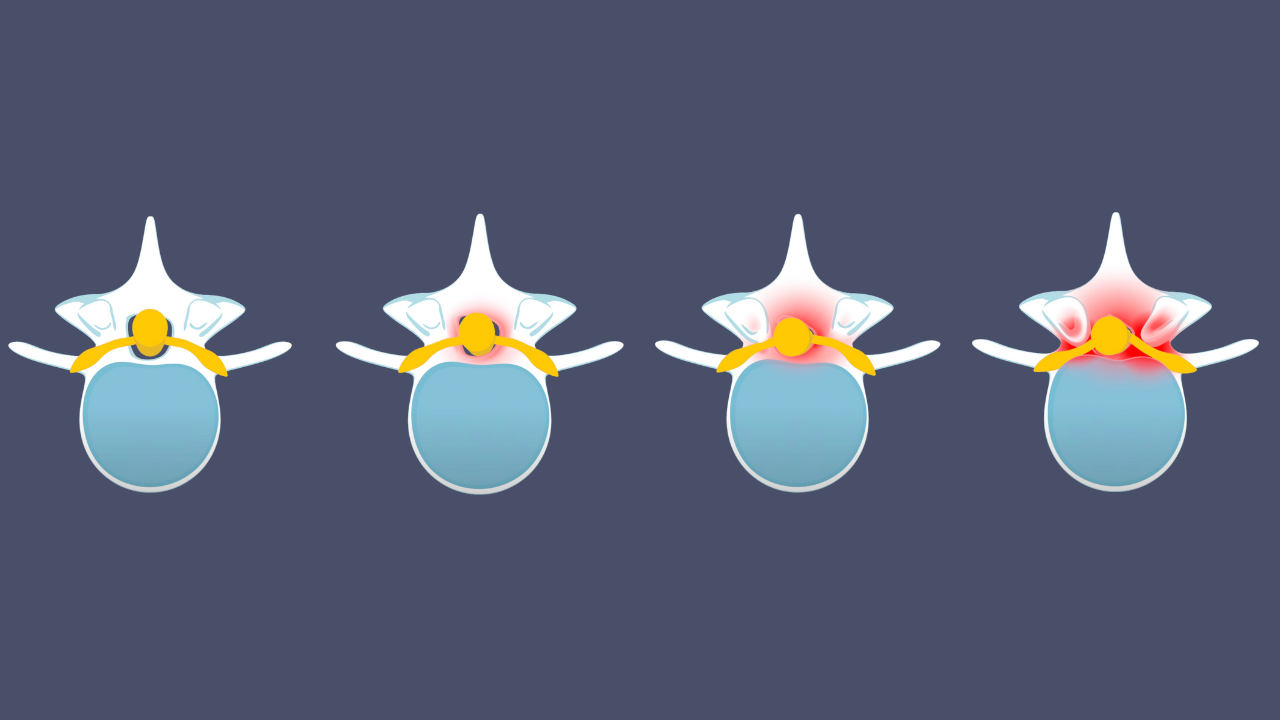Spinal Stenosis: Narrowing Down the Causes, Symptoms, and Treatment Approaches


Spinal stenosis is a painful narrowing of the spinal canal, which puts pressure on the spinal cord and nerves. The condition may frequently cause pain or numbness in the legs and feet. The condition mostly occurs in people over the age of 50. Symptoms may appear gradually over time.
Spinal stenosis can be caused by several factors. Normally the vertebral canal will provide enough room for the spinal cord and nerves. However, aging and age-related changes in the spine can cause narrowing of the spinal canal. Injuries and genetic or inherited conditions are also possible aggravating factors. In some cases, this condition occurs in the neck, known as cervical stenosis.
Depending on the severity of the condition, those afflicted with spinal stenosis may experience symptoms in the back, arms, legs. buttocks or feet. These symptoms may include:
While pain from spinal stenosis will vary from person to person, it is often described as a deep and dull ache in the legs when walking Others have described it as an electric-like or burning sensation, which may come and go.
Your physician will review your medical history and perform a physical exam. You will also likely have imaging tests so your physician can get a better view of your spine. These tests may include X-rays, an MRI or CT scan. If your symptoms involve the neck, it may be helpful to learn more about cervical stenosis.
Depending on your symptoms and severity, there are several treatment options available.
Less severe at-home treatments may include applying heat or cold to the affected area, or stretching and exercise programs to help relieve pain.
Non-surgical treatments for spinal stenosis may consist of over-the-counter medications to relieve inflammation; physical therapy to help improve strength and flexibility; or steroid injections to help reduce pain and irritation.
For complex cases, surgical treatments may be recommended if more conservative options have not worked. For those needing surgery, options may include a laminectomy, laminotomy, laminoplasty, foraminotomy, or spinal fusion.
Your physician will recommend the best available treatment plan for your individual condition.
While there is no guaranteed way to prevent spinal stenosis, you can take steps to promote better spine health. These include adopting a healthy lifestyle to lower your risk.
To help lessen your risk, it is important to maintain a healthy weight and active lifestyle. This includes walking, stretching, maintaining good posture and stopping smoking.
If you are experiencing symptoms of spinal stenosis, the exceptional physicians of New Jersey Brain and Spine may be able to help. Contact us today for an appointment or second opinion.
For more than 30 years, our physicians have compassionately cared for more than 40,000 patients with complex conditions.